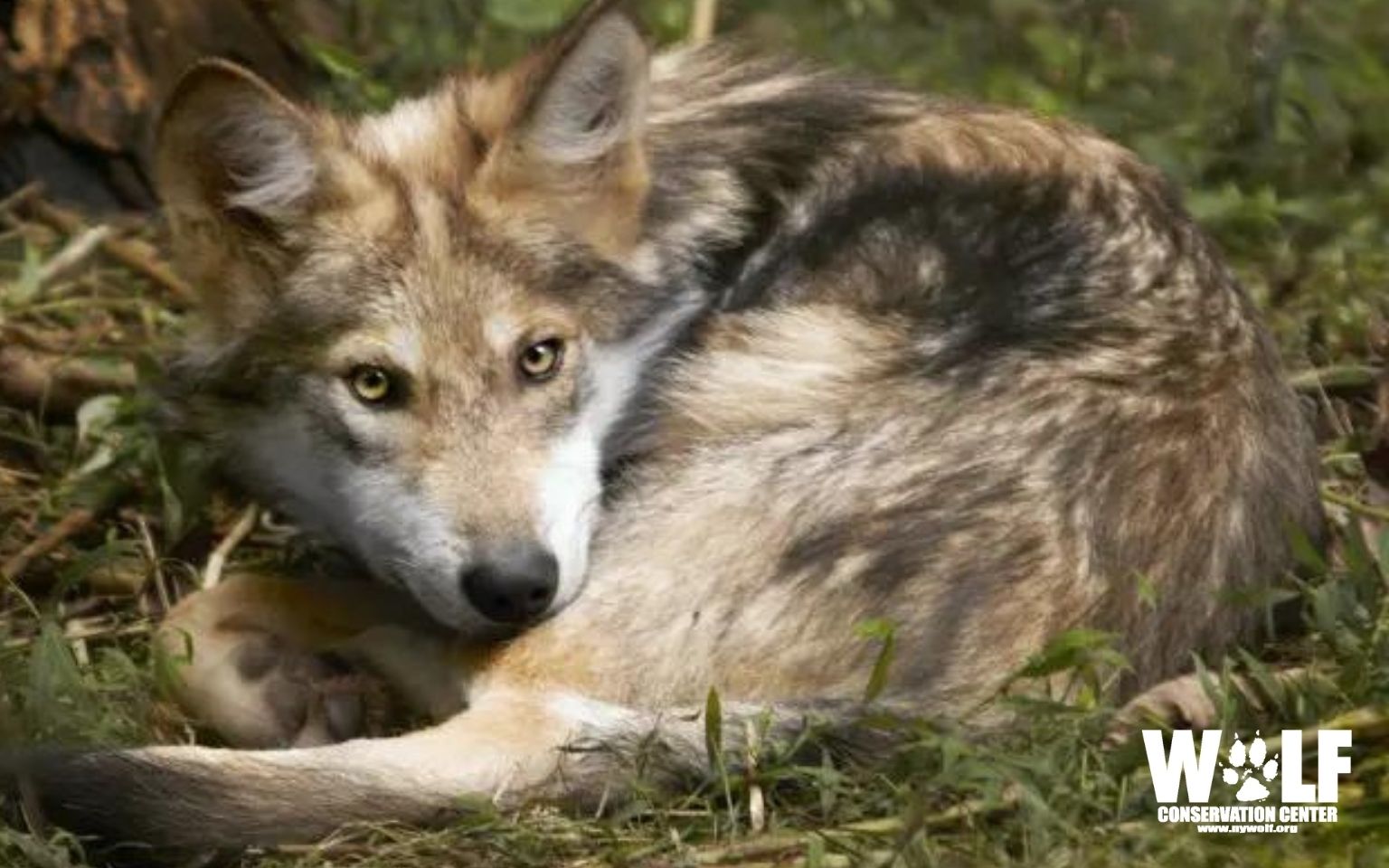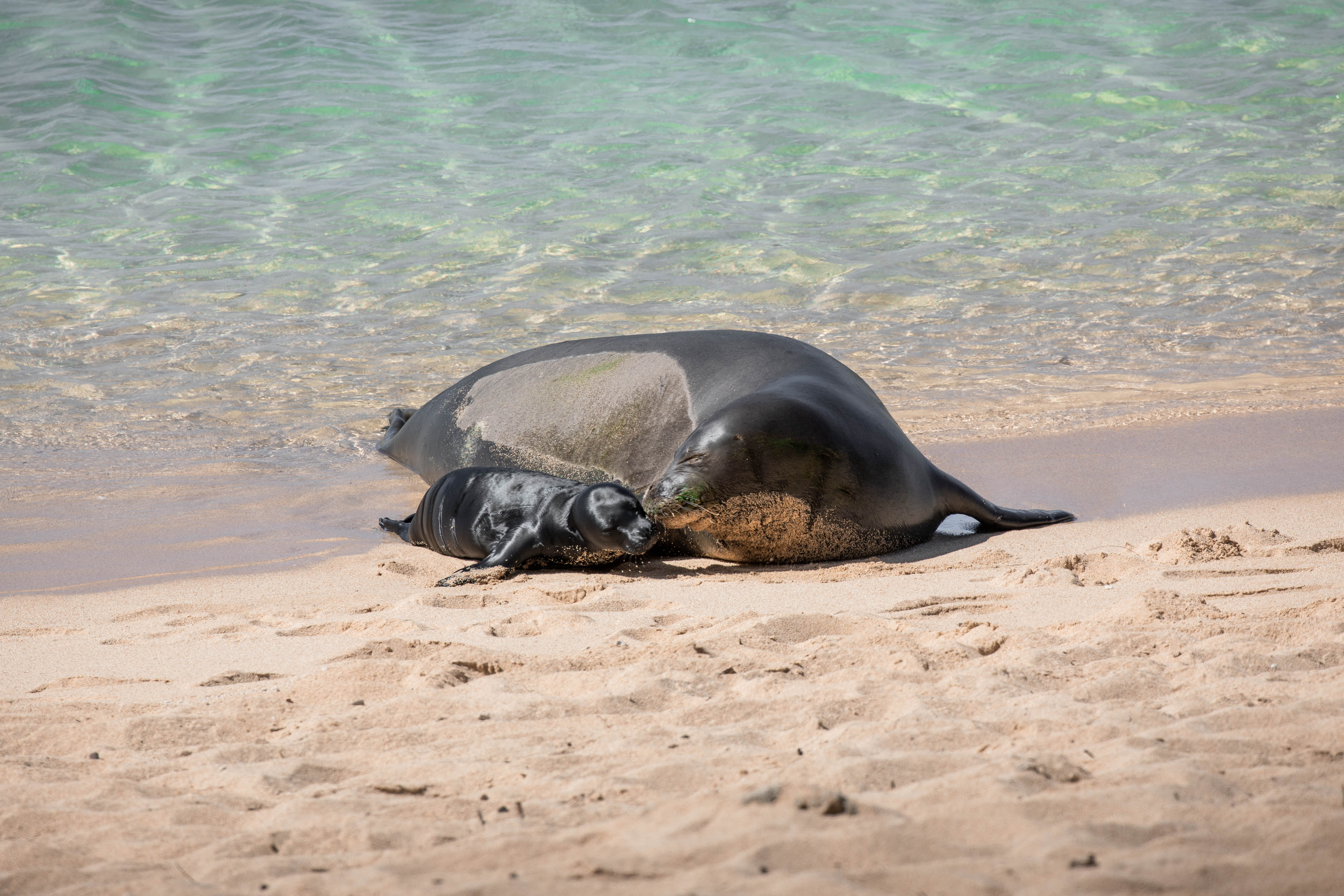Babs watches over her four new siblings as her mother, Trumpet, rests after the birth. The newly born wolf pups are tiny and can’t even open their eyes yet. Luckily for them, they’re safe in a hidden den in the Wolf Conservation Center – and they have the pack to watch over them. In the wild, some Mexican gray wolves aren’t so lucky.
We’re proud to partner with the Wolf Conservation Center (WCC) to support Babs, Trumpet, and the other Mexican gray wolves that live there. Our 1% donation will help them to provide a safe home for breeding pairs, with the goal of reintroducing some individuals to the wild where they belong.
What is the Mexican gray wolf?
The Mexican gray wolf or ‘Lobo’ is one of the most endangered mammals in North America. They’re one of the smallest wolves, standing about 30 inches tall and 4.5 to 5.5 feet long. They look ready for the winter – with a fluffy muzzle and bushy tail all year round. Their fur is a mix of rust browns and grays, and individuals can have really unique patterns around their faces.
Family is central to every wolf. No wolf wants to be a ‘lone wolf’ – they are very social animals, living in packs from four to nine individuals. It’s a family unit; made up of the mom and dad (breeding pair) and their children from multiple litters. The older wolves help to look after their younger siblings, as well as play together.
These wolves have been brought back from the brink. After hundreds of years of hunting and habitat destruction, they became extinct in the wild by the 1980s. The only surviving members of the species were seven wolves in captivity. The population was bred back to greater numbers and reintroduced to the wild in Mexico and the US in 1998. The current wild population numbers about 186 individuals and is increasing most years – thanks to the efforts of conservation organizations like the WCC.
What is the Wolf Conservation Center?
The Wolf Conservation Center is a home for captive-bred wolves and plays a crucial part in the survival of the species. More than that, it is a safe haven for many endangered wolves. Reintroduction isn’t easy and the wolves need to be kept in conditions as close to the wild as possible. That means reducing their interactions with humans – wolves in the wild naturally avoid humans, and this helps to keep them safe. They’re given larger spaces to roam and hunt or scavenge food, as they would in the wild.
They are one of the three largest holding facilities in the Species Survival Plans for Mexican gray wolves and red wolves. In over 20 years of care and breeding efforts, they have welcomed many newborn wolf pups into the world. They even released four Mexican gray wolves from their families into the wild. These wolves joined wild packs in Arizona, New Mexico, and northern Mexico. This is a huge step – the wild population is so small, they need more genetic diversity to maintain thriving, healthy packs.
You might remember the WCC – we partnered with them back in 2020! They do incredible work to preserve endangered wolf species from looking after the animals, to sharing stories and understanding. We used to live comfortably alongside wolves, and we can do so again.
What’s the goal for Mexican gray wolves?
The WCC wants to see these wolves re-establishing their ancestral habitat in south-western US and Mexico. The USFWS maintains recovery zones for the wild population known as the Blue Range Wolf Recovery Area. Eventually, they hope that the wild populations will be stable enough to allow them to end the captive breeding program. However, Mexican gray wolves need much more support and protection to reach this point.
Our 1% donation will support the daily care and upkeep of the wolves and their habitat. It will also support their essential advocacy and education. People might not be used to living alongside wolves, but we can learn to live peacefully with them. There are lots of ways to show your support – from sharing knowledge about wolves to getting involved with campaigns and adopting one of the WCC’s resident Mexican gray wolves.
A huge thank you to all our clients, supporters, and staff. Without you, we couldn’t give back to endangered species every month.



